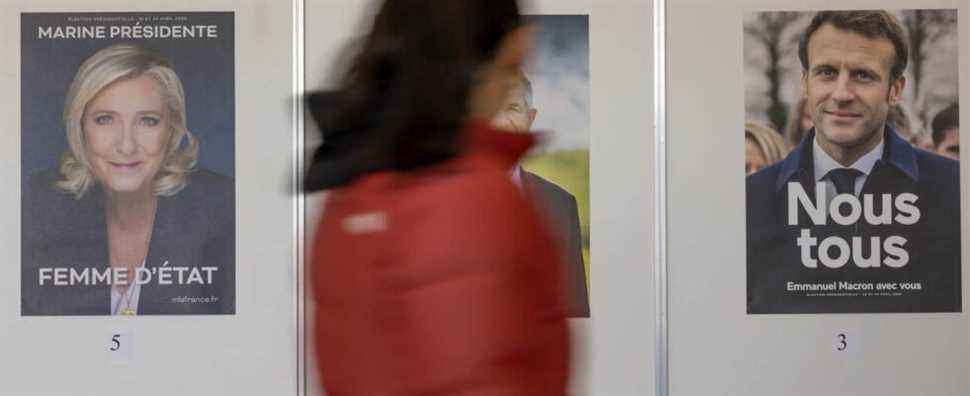The first round of the presidential election highlights a division of the French political landscape into three blocks – center, extreme right, radical left – which leaves no space for historical parties, now marginalized electorally and financially.
After decades of a system of alternation between socialist power and Gaullist power, the irruption of Emmanuel Macron taking power from the center in 2017 pushed the centers of gravity of the oppositions to the extremes.
“The first round of this presidential election confirms the tripartition of the electorate and the installation of three poles substantially equivalent in relative weight”, explains political scientist Gaël Brustier. It is the “keystone of the new French political world”, he writes in a column on Slate.
“The French political landscape is being redefined around three political forces: a bloc that unites center left and center right, embodied by Macron, the radical left [incarnée par Mélenchon] and the radical right [menée par Marine Le Pen] “Said Bernard Poignant, former socialist mayor of Quimper who became a macronist, in an interview with the newspaper. West France.
An analysis also shared by sociologist Erwan Lecœur, who spoke of “tripolarization of the political field” on Franceinfo.
PS and LR crushed
In this hypothesis, the two great French formations which dominated the majority of the political life of the Vand Republic, since 1958, the Socialist Party (PS) and The Republicans (LR, the Gaullist formation), find themselves crushed.
“We had begun the decomposition / recomposition of French political life in 2017 with the advent of macronism, the collapse of the Socialist Party. And we watched season two yesterday […]the confirmation of the atomization of the PS, and the second historical pillar of the French political landscape, Les Républicains, in turn is struck down, ”reported political scientist Jérôme Fourquet on France Inter.
“What is the raison d’être of the PS? What is the raison d’être of LR, in a political system where you have a radical left, a central bloc that goes from the center left to the right and a bloc on the far right? It’s extremely difficult to find…” notes AFP Brice Teinturier, head of the Ipsos polling institute.
Politically swept away, these parties, which rained and shined in France until the mid-2010s, also found themselves financially strangled. With their scores below 5%, they will hardly be reimbursed for their campaign costs.
The PS had already had to resolve to sell its historic seat at the end of 2017 to bail out, and LR candidate Valérie Pécresse launched a call for donations on Monday to try to save the party.
“Elite bloc”?
However, the homogeneity of the extreme blocks is questionable given their diverse sociological composition, which would potentially make them less easy to structure.
“I reject the idea of three blocs, left, center and right,” says pollster and political scientist Jérôme Sainte-Marie, from Pollingvox, who sees a clash between an “elite bloc” of wealthy categories behind Macron and a “bloc popular » double.
Jérôme Fourquet partly shares the analysis of the composition of the electorate of Mr. Mélenchon, who benefited from the useful vote of voters from other leftist formations, such as the ecologists.
In addition to his base, he has “new reinforcements” with “pretty significant progress in […] the electorate with an immigrant background” and he captured “even more a culturally left-wing electorate, teachers, students”.
